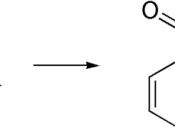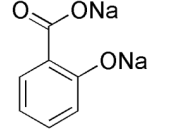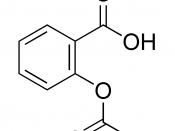The Synthesis of Organic Aspirin
Abstract:
The purpose of this experiment was to find out how a reaction undergoes for a globally known painkiller called aspirin, and to become familiar with achieving successful yields. Aspirin is synthesized from salicylic acid and acetic anhydride. Those two chemicals are mixed together along with sulfuric acid to form a crude solid. Filtration is used separate the impurities from the crude aspirin. To get purified aspirin, the precipitate was heated until all the excess had been removed. The end product is pure dry aspirin. Though there was too much room for error the yield percentage will almost never be a hundred percent.
Introduction:
In 1897 Felix Hoffman synthesized acetylsalicylic acid when he was treating is father with today's so called aspirin due to his suffering of arthritis. It was known that aspirin had some side effects that were caused by the level of acid in the aspirin itself, which made the stomach irate when ingested.
Hoffman reduced the acid by mixing the aspirin with sodium salicylate, a extract found in the willow tree bark [1], which paved the way to today's most popular and inexpensive drug [2].
Aspirin is the common name given to acetylsalicylic acid, sometimes abbreviated as ASA. ASA is considered to be an organic acid since it is composed of Carbon, Hydrogen, and Oxygen which also contains the carboxyl functional group-COOH. Pure ASA can be synthesized by treating salicylic acid with acetic anhydride in the presence of a trace of either sulfuric (in our case) or phosphoric acids. The complete reaction of ASA is shown in Figure 1.1 on page 2. Figure 1 shows the reaction for the synthesis of aspirin.
Figure 1: Salicylic Acid + Acetic Anhydride ( Acetylsalicylic acid + Acetic Acid
Experimental:
There were plenty of chemicals...


